We woke early and decided to undertake a morning walk to the Yarkand bazaar that Abdulrahman had told us was quite close to our hotel. We didn't find the bazaar but we did end up circumnavigating an enormous military base, some kilometers in perimeter. The huge military presense in Xinjiang - and in fact all through China - never ceased to amaze us. Our walk around the base took almost an hour and we were pleasantly relieved to be back at our Yarkand Queen Hotel without getting lost.
We wandered the roads around our hotel watching the sleepy town awake. The streets were becoming busy with ordinary people going about their lives walking or commuting to work on scooters and women street sweepers were in full swing cleaning the roads of dust. It looked like such a futile activity to sweep streets with their huge brush brooms but like the dusty streets of Kashgar, it seemed to be quite effective. Streets were lined with avenues of plane trees which to some extent seemed to counteract the dust and provided a shady and pleasant atmosphere to Yarkand town. There certainly were no tourists about and no-one took much notice of us foreigners either.
We always feel at home in Xinjiang Province. Whether it is the fascinating Silk Road history, the exotic and friendly Uighur people and their proud culture, the remote landscape or the dry desert climate we really do not know. But Xinjiang to us has always felt - well, yes - rather spiritual. And although this was our first journey south of Kashgar, the essence of the land and its people felt strangely familiar and very comfortable to us.
Once the seat of an ancient Buddhist kingdom, Yarkand or Shache is an oasis town in the Tarim Basin sandwiched between the Taklamakan Desert and the Kunlun Ranges, and was during the Han Dynasty (206 BC - AD 220) a major staging post on the Southern Silk Road. The remote and treacherous southern path was probably the most ancient of the three silk road routes that for centuries transversed China into the Indian subcontinent and Central Asian regions. Yarkand was visited during the Tang Dynasty by the famous Italian traveller and merchant Marco Polo (1254-1324). He described it as being wealthy in terms of agricultural produce, especially cotton and relates a pleasant and favourable experience in what was then the walled city of Yarkand.
The Yarkand oasis now covers an area of over 3,000 square kilometers. Given the size and scope of the old kingdoms and their population size, the oasis was thought to once cover a much more extensive area. The southern route, like much of the Taklamakan Desert environs, is now characterised by numerous abandoned cities deserted by retreating rivers and engulfed by encroaching sands; the consequences of major desiccating climate change over the centuries that was documented as far back as the AD 3rd century. We had witnessed similar lost cities and towns during our journeys from Urumqi to Kashgar and more recently our travels in Turkmenistan and Iran. It is an eerie experience to come across the remains of such lost civilisations.
At one stage Yarkand was an important centre for trade via British India and was once a key centre for Hindu tradespeople and money lenders. Today, Yarkand is at the heartland of Uighur culture. The town is the hub of the Yarkand County of the Xinjiang Uighur Autonomous Region that boasts a population of around 374,000 people. And Yarkand is again an important junction from the Southern Silk Road to a more recent branch road that leads to Aksu to the north.
We were somewhat surprised at the amount of irrigated farming land. For some reason we thought that the area would be far more remote and much more desert like in its appearance. Instead extensive irrigated farmland comprising cotton, wheat and corn crops was interspersed with pomegranate, pear and apricot orchards. Like a lot of Xinjiang Province, Yarkand County is rich in mineral deposits of petroleum, natural gas, gold, copper, lead, bauxite, granite and coal.
Abdulrahman met us after breakfast for a walk around Yarkand town and seemed rather amused that we could not find the bazaar. From his smiling comments I think he was more amused at our independence which to date had not been very successful. It became quite obvious however why we had not been able to find the markets. When we walked they were not open and without the people and their stalls, there was not much to identify it.
Just one long street comprising shops and stalls, the markets were interesting in themselves as they appeared to be solely for local shoppers. There were no foreigners here and the shops mainly sold practical good such as cans of fuel, hardware, kitchenware with ubiquitous straw brooms, brilliantly coloured pink, red and green cloth and materials, bread and fruit and vegetables. It was all much more urbanised than we had expected. Electric scooters with Uighur women passengers riding side saddle on the back, holding their long dresses up from the dangers of the scooter wheels bustled through the busy morning markets. Taxi cabs honked their horns loudly, vans were double parked along the narrow street and people generally went about their business thankfully taking absolutely no notice at all of us foreigners. We bought some bananas, flat bread and water which turned out to be a great success on our long travels as a bland and easy snack.
A short stroll from the markets led us to the Altyn Mosque and Imperial Tomb of Amani Shahan. The Altyn Mosque was rather a splendid building with a sprawling cemetery and mazar (pilgrimage site). At the rear of the mosque was a gorgeous trellised courtyard lined with grape vines. Shaded and cool, it was a welcome relief from the blazing late morning Yarkand sun.
The tombs at the mosque house ancient Yarkand kings but one tomb in particular, the tomb of Amani Shahan was of significant importance. A Uighur queen, musician, artist and poet, Amani Shahan (wife of King Arbdu Rushitihan) is famed for her work in collecting the muqamm, a melody type used in Uighur music that was developed in north-west China and central Asia over the last 1,500 years. During her life she wrote a number of famous works, including the Twelve Mukamm which is recognised as a heritage listing by the United Nations Education and Research Organisation. Poor Armani Shahan died during child birth in 1560 at the age of just 34 and was buried at the Yarkand Mazar. In 1992 an imperial tomb was built by the local people in recognition of her great contribution to Uighur arts.
In the late morning we set off toward our destination of Keriya, a 526 kilometer journey via the townships of Kharghilik and Hotan. We crossed the (then) dry vast beds of the Yarkand River which like many of the desert rivers in the region is fed seasonally by the snow melts of the surrounding Karakoram Ranges. The mighty Mustagh Ata, which we passed on our trip from Tashkorgan to Kashgar is a primary source of water for the Yarkand River and enables life for the Yarkand basin. The countryside from Yarkand to Kharghilik was dominated by fruit and walnut orchards, within the perimeters of towering poplar trees. Large irrigated broad acre cereal and oilseed farms looked in fine order and plastic covered "glasshouses" housing tomatoes and other vegetable crops were in abundance. It all looked very prosperous.
Our first stop was at Kharghilik, a significant centre for the surrounding agricultural enterprises. A large sprawling town with shady tree lined streets and a well known Friday Mosque and covered bazaar, Karghilik looked surprisingly prosperous with huge clusters of new looking housing apartments lining the streets. Karghilik is most commonly recorded in tourism literature as a pleasant stopping place on the way from Kashgar to Hotan and as the junction for the 1,100 kilometer highway from Xinjiang to Tibet. We wondered what the trip would be like. Lonely Planet Guide describes it as enormously tough and in the past as being very dangerous. It looked to us like a fascinating trip that we may take on in the future, especially as it is now a sealed highway*.
The scenery during the long trip from Karghilik to Hotan was like chalk and cheese, or rather cheese and chalk. We travelled through endless parched desert countryside flanking the perimeter of the Taklamakan Desert. There was no agriculture, no trees even - only small pygmy like bronze desert vegetation that somehow managed to eek out a living in the ferocious desert climate. Dust was our constant companion and we began to appreciate the enormity of this huge desert and the dangers it presents to unwary travellers.
The trip was painstakingly slow and at times the highway speed limit was reduced to as slow as 60 kilometers per hour. There was no apparent reason for such draconian speed restrictions on a long, flat well sealed road and we wondered at times if we would ever reach Keriya or even Hotan by nightfall. But like our taxi driver who drove us from Tashkorgan to Kashgar, both Abdulrahman and Sabir seemed to passively accept it all as part of everyday life.
In the middle of the desert highway we spotted what appeared to be a small, insignificant dust coated village. It was a cement manufacturing town located in what looked like a dust bowl of a reservoir. Abdulrahman told us that it was a soldier settlement and the workers were former military personnel. Goodness knows what these people did to deserve such a shocking existence. The heat was extreme and we drove on toward Hotan, along with a weary convoy of dust covered trucks.
Suddenly out of the blazing desert we arrived on the outskirts of Hotan. The stark desert countryside gave way to a narrow strip of greenery which followed the Hotan River into Hotan town. The entrance to Hotan must have been some 20 kilometers long through the narrow poplar lined highway.
Hot, hot Hotan. We arrived in the centre of town at 4.00 pm to be greeted by a blazing 43 degree afternoon. But Hotan was the most amazing town, simply alive with afternoon shoppers and jam packed with motor scooters, taxis, vans and trucks. Numerous donkey carts bustled along the roads in amongst the ubiquitous electric scooters and some rather expensive looking cars. The whole air of the town was that of considerable but somewhat surprising prosperity. Abdulrahman and Sabir had religious duties to attend to so they dropped us off at the local markets for an hour or so. It was truly fascinating. Here we really must have looked like foreigners. Although they were extraordinarily friendly and helpful, people just stopped in their tracks and stared in disbelief. It was obviously not a town on the tourist trail.
Hotan, like Yarkand is an oasis town lying in the Tarim Basin just north of the Kunlun Mountains. The town boasts a population of 114,000 (2006) and is almost exclusively settled by Uighurs. Today, it is a centre for the local agricultural industries and although it is an oasis town, it is highly dependent on the two large rivers - the Karakush and the Yurungkush Rivers (Black and White Jade Rivers) for the provision of water in this extremely harsh and remote environment.
Like Yarkand, Hotan was famous as a strategic junction on the old Silk Road particularly in the Han and Tang dynasties, with routes through to India, Tibet, Central Asia and far west China. Wikipedia documents: "It (Hotan) provided a convenient meeting place where not only goods, but technologies, philosophies and religions were transmitted from one culture to another". Another, less favourable item traded was that of disease. Devastating diseases such as bubonic plague or "Black Death" were also transmitted via these old trading routes. Excavated ruins reveal a kaleidoscope of different races and cultures, including Central Asians, Indians and Caucasians had once lived in the Hotan area.
The Hotan markets were some of the most frenetic yet most interesting markets we had seen. We must have arrived at shopping time for the local people as the bazaar was in absolute full swing. The colours of the markets and of the women's clothes were extraordinary shades of vibrant pinks, greens and reds, amplified no doubt by the blazing sun. Stalls sold everything from brilliantly coloured materials, clothing and jewellery to a full gamut of household and kitchenware items. Hotan is famous for its jade and silk. The Hotan silk patterns are unique and look strikingly like running water. We had seen a number of women wearing the silks in Kashgar and they were quite stunning. We bought a number of gorgeous vibrantly coloured, gold threaded silk scarves and then tried to find a notebook (as in the old fashioned paper, not a computer!) as I had run out of writing paper for my travelogue. Well that turned out not to be quite so easy and in the end a very patient Abdulrahman and Sabir had to take us to another market to find one.
In the late afternoon we visited a carpet making factory on the outskirts of Hotan. A large factory housed numerous women patiently hand making an enormous variety of large, rather drab looking carpets. The conditions inside the factory were very basic and it was hot. Some of the women were very friendly, others just turned their heads away. We felt sorry for their plight. It was extremely hard and onerous work and we felt rather ashamed to be there watching them. We certainly did not want to take any photos.
Our next site visit was to a shed where a very elderly man was spinning raw silk thread. It was not particularly interesting and was yet another occasion that convinced us that we really dislike contrived tourist activities.
We did however want to visit the carpet factory shop but there was no-one to open it up for us. After an hour or so waiting the shop opened. To our disappointment, the rugs we saw were rather touristy and very ordinary. For Alan-the-Compulsive-Carpet-Buyer it was probably a very good thing. By this time, it was very late in the day. We had another 170 kilometers to drive to Keriya and we were anxious to get going.
The drive to Keriya seemed to take forever with speed restrictions bringing our car to what felt like a standstill. In the pale desert sunset ghostly grey sand dunes dominated the scenery and dust blew mercilessly across the countryside, engulfing our car in a buff coloured smog.
We arrived in Keriya town at 10.30 pm Beijing time**. Once again we assured a rather surprised but obviously relieved Abdulrahman that we would be fine to find a meal on our own. We just needed some direction. Despite our lack of independence success to date Abdulrahman agreed and pointed toward some outside cafes where he assured us we could find good food.
After a very long and hot day it was however, beer that was our first priority. It was still light and we took off at a rapid rate in search of some drinks and somewhere to eat. We knew the Mandarin word for beer "pijou" but of course in this area the local people are all Uighur and speak their own language. But thanks to the warm and helpful local people, we somehow managed to communicate what we needed and were pointed toward a group of shops where to our delight we found a liquor shop. Despite Alan nearly being cleaned up by a car travelling along the foot path, we managed to buy beer and wine and headed to the first of the outside cafes.
Our cafe experience was a re-run of our night in Yarkand and again the cafe owners had no problems with us bringing alcohol. We had no idea of what to order and again just pointed at what a group of local young people were eating. Once again it was a huge bowl of what looked and tasted like mutton soup. It was quite delicious but it was best not to look too closely at the white fatty guts in the bottom of the dish. We were soon surrounded by a group of young people who could speak a little broken English and were keen to talk to us. One young man came and sat with us for some time, explaining to us about his education and life in Keriya. On a warm balmy evening we sat back and grinned at each other. Our independence so far was hardly meritorious but we had found beer and wine, we had thoroughly enjoyed our meal and the gregarious young people - and an evening on our own in a totally foreign but friendly township.
Out of the blue a group of Han Chinese people entered the restaurant. What was a friendly and relaxed atmosphere soon turned into one of scathing hostility. We had no idea of the nature of the interaction between the Uighur youths and the Chinese people but it was not hard to work out that the reactions of the two groups was far from friendly. Our young friend who sat with us seemed to be particularly angry. Nothing untoward occurred but it was a stark reminder of the not so underlying tensions between the Uighur and the Chinese peoples.
* We are now scheduling this trip from Xinjiang to Lhasa, Tibet and then the "Tea Road" from Lhasa to Yunnan Province, China as a possibility for our 2013 travels. Thanks to traveller Anne Carter, we have been further inspired to undertake this trip after reading her tour "Epic Dreams" that she developed for Wendy Wu Tours.
** All of China is on one standard time - Beijing Time. In Xinjiang Province "local time" is three hours behind Beijing and despite official rules, the Xinjiang custom is to use the local time.
Southern Silk Road - Tracking the Taklamakan
Monday, May 16, 2011
 Keriya (Yutian) , Xinjiang Uygur Zizhiqu, China
Keriya (Yutian) , Xinjiang Uygur Zizhiqu, China
Other Entries
-
27The Wonderful Faces of Chitral Town
May 0412 days prior Chitral, Pakistanphoto_camera8videocam 0comment 0
Chitral, Pakistanphoto_camera8videocam 0comment 0 -
28A Four-Seater Jeep, Six People & Two Kalashnikovs
May 0511 days prior Bomburet, Pakistanphoto_camera15videocam 0comment 1
Bomburet, Pakistanphoto_camera15videocam 0comment 1 -
29Love Affair with Rumbur, A Sick Jeep Trip to Buni
May 0610 days prior Buni, Pakistanphoto_camera9videocam 0comment 0
Buni, Pakistanphoto_camera9videocam 0comment 0 -
30Insight into the Life of the Lost Kalasha People
May 0610 days prior Buni, Pakistanphoto_camera8videocam 0comment 3
Buni, Pakistanphoto_camera8videocam 0comment 3 -
31More Photos of the Kalasha Peoples
May 0610 days prior Buni, Pakistanphoto_camera14videocam 0comment 0
Buni, Pakistanphoto_camera14videocam 0comment 0 -
32Tandoori Chicken, Potatoes & Eggs at Shandur Pass
May 079 days prior Gupis, Pakistanphoto_camera23videocam 0comment 0
Gupis, Pakistanphoto_camera23videocam 0comment 0 -
33You Want More.....? Are You Sure.....?
May 088 days prior Gilgit, Pakistanphoto_camera14videocam 0comment 1
Gilgit, Pakistanphoto_camera14videocam 0comment 1 -
34Heaven on Earth at Eagle's Nest Hotel, Duikar
May 097 days prior Duikar, Pakistanphoto_camera19videocam 0comment 1
Duikar, Pakistanphoto_camera19videocam 0comment 1 -
35The Solitude of a Dawn in Duikar
May 106 days prior Karimabad, Pakistanphoto_camera10videocam 0comment 3
Karimabad, Pakistanphoto_camera10videocam 0comment 3 -
36Photo Gallery of Karimabad and the Hunza Area
May 106 days prior Karimabad, Pakistanphoto_camera22videocam 0comment 2
Karimabad, Pakistanphoto_camera22videocam 0comment 2 -
37Our Man From Waziristan or "Titanic!"
May 115 days prior Sost, Pakistanphoto_camera20videocam 0comment 0
Sost, Pakistanphoto_camera20videocam 0comment 0 -
38A Public Bus Over the Khunjerab Pass Into China
May 115 days prior Khunjerab Pass, Pakistanphoto_camera21videocam 0comment 0
Khunjerab Pass, Pakistanphoto_camera21videocam 0comment 0 -
39Our Top Tips for Crossing the Khunjerab Pass
May 124 days prior Khunjerab Pass, Chinaphoto_camera2videocam 0comment 0
Khunjerab Pass, Chinaphoto_camera2videocam 0comment 0 -
40At Home in Lovely Tashkorgan - We Find Hunza Man
May 133 days prior Tashkorgan, Chinaphoto_camera12videocam 0comment 0
Tashkorgan, Chinaphoto_camera12videocam 0comment 0 -
41Two Taxis and a Slow Trip to Kashgar
May 142 days prior Kashgar, Chinaphoto_camera10videocam 0comment 0
Kashgar, Chinaphoto_camera10videocam 0comment 0 -
42Evocative Old Kashgar
May 151 day prior Kashgar, Chinaphoto_camera8videocam 0comment 0
Kashgar, Chinaphoto_camera8videocam 0comment 0 -
43Photo Gallery of Kashgar
May 151 day prior Yarkand, Chinaphoto_camera18videocam 0comment 0
Yarkand, Chinaphoto_camera18videocam 0comment 0 -
44Southern Silk Road - Tracking the Taklamakan
May 16 Keriya (Yutian) , Chinaphoto_camera16videocam 0comment 0
Keriya (Yutian) , Chinaphoto_camera16videocam 0comment 0 -
45Tazhong - Drawing Chickens in the Taklamakan
May 171 day later Tazhong, Chinaphoto_camera23videocam 0comment 0
Tazhong, Chinaphoto_camera23videocam 0comment 0 -
46Desert Devils of the Taklamakan
May 182 days later Korla (Bayingol), Chinaphoto_camera11videocam 0comment 0
Korla (Bayingol), Chinaphoto_camera11videocam 0comment 0 -
47Toward Urumqi - Siamese Mountains and Wind Farms
May 193 days later Urumqi, Chinaphoto_camera3videocam 0comment 0
Urumqi, Chinaphoto_camera3videocam 0comment 0 -
48A Day in Urumqi and The Fabulous Erdaoqiao Markets
May 204 days later Urumqi, Chinaphoto_camera6videocam 0comment 0
Urumqi, Chinaphoto_camera6videocam 0comment 0 -
49R & R in the Extraordinary City of Shanghai
May 215 days later Shanghai, Chinaphoto_camera10videocam 0comment 0
Shanghai, Chinaphoto_camera10videocam 0comment 0 -
50A Remarkably Unremarkable Journey Home
May 237 days later Crowdy Head, Australiaphoto_camera1videocam 0comment 1
Crowdy Head, Australiaphoto_camera1videocam 0comment 1

 Keriya (Yutian) , Xinjiang Uygur Zizhiqu, China
Keriya (Yutian) , Xinjiang Uygur Zizhiqu, China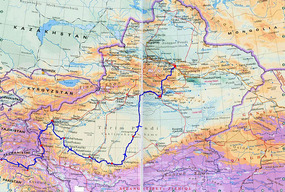
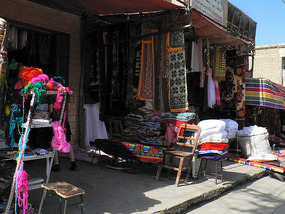
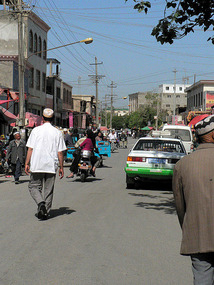
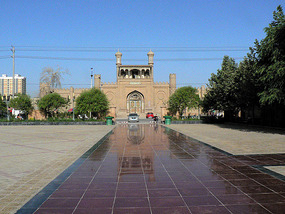
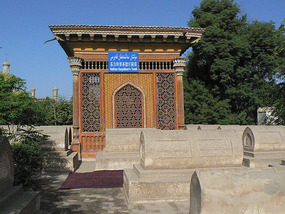
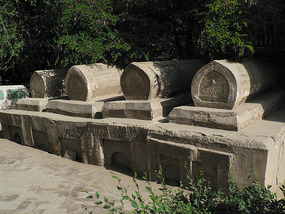
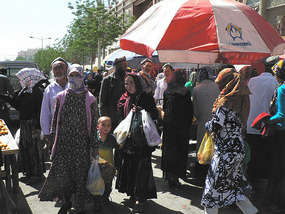
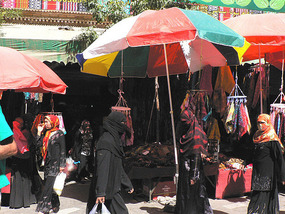
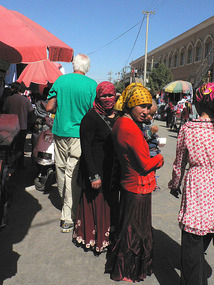
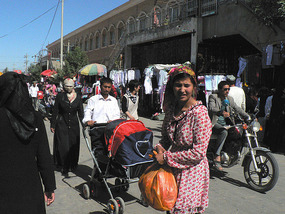
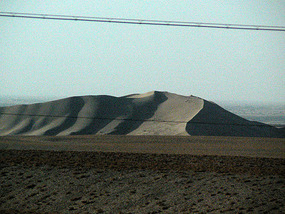
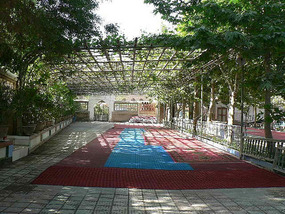
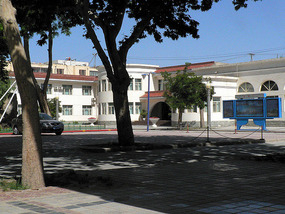
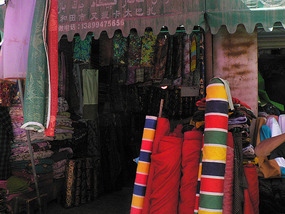
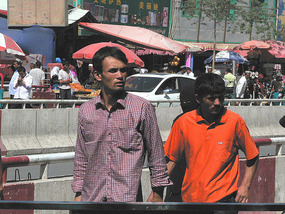
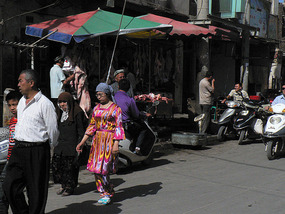



2025-05-22